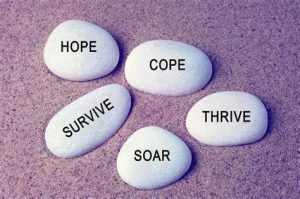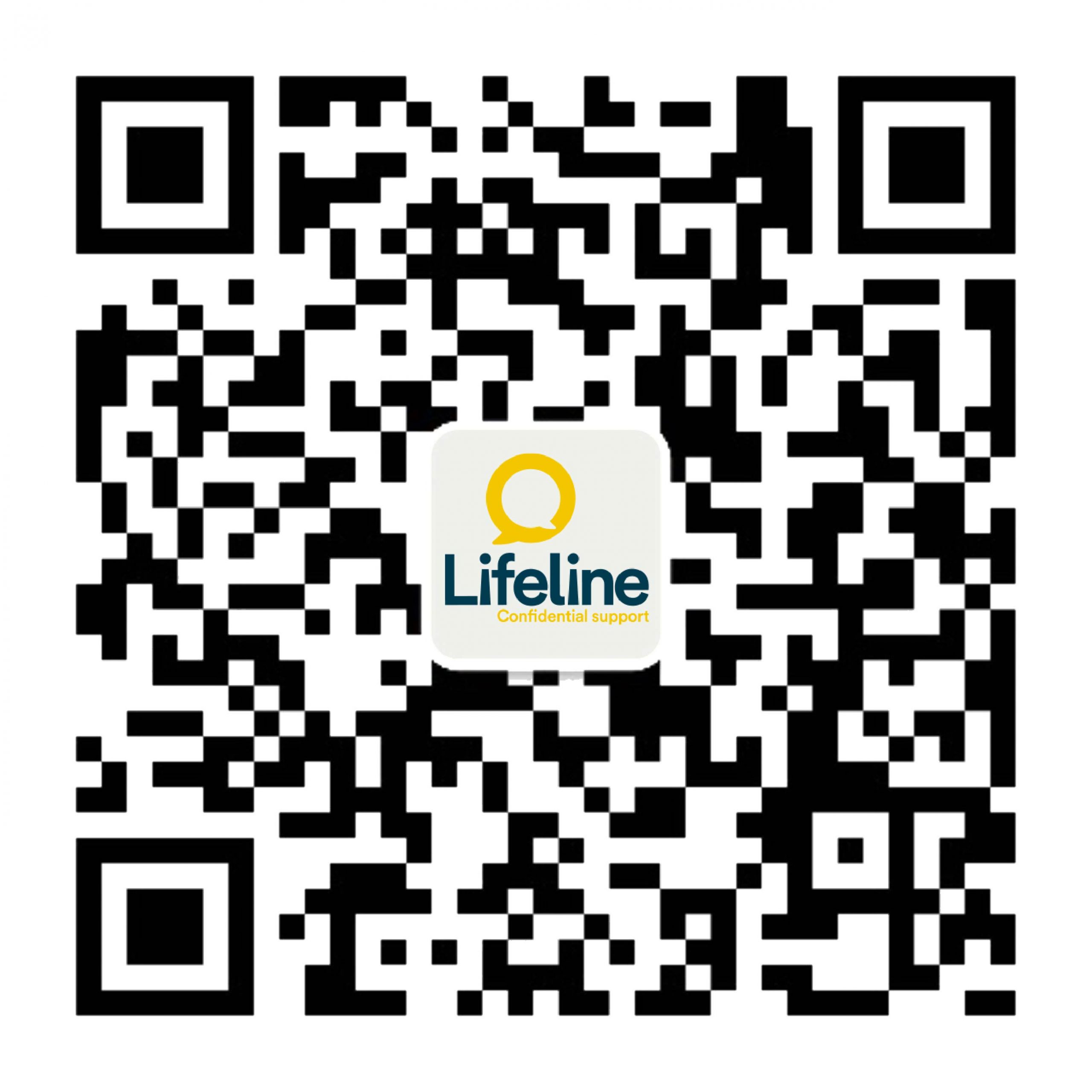
Understanding the Internal Narrative with Dr. Christine Forte
By Christine Forte, PsyD
Dr. Christine Forte is a guest writer for Lifeline and was until recently a long-time SIMHA member and resident of Shanghai. You can find more at her website Balanced Heart Counseling or check out her podcast Mental Oasis (VPN recommended).
Although the peak of the current health crisis seems to have passed in China, many expats may still find themselves stranded in countries far from where they currently call home, or they may be worried about friends and family in a country where the epidemic is peaking. Some may also find it challenging to feel safe going out and about again, or being in crowded places.
Fear and Security
Dealing with fear triggered by uncertainty can be a tremendous challenge psychologically. This uncertainty may connect to remaining healthy, how long the limitations on our lives will last, what the full scope of the economic implications will be, or how we will feel safe again even after we have been told the danger has passed.
I’d like to take this moment to point out, though, that something we tend to forget in a time like this is that uncertainty is always present in our lives. None of us know the exact number of our days, what our jobs might look like in a year, or even what tomorrow will bring. But currently, with the advent of Covid-19, this uncertainty feels much more tenuous than usual. We are constantly reminded of our fragility as humans.
We have an innate desire to feel in control of our environment. This makes sense – security goes hand in hand with many of the elements critical to our survival, such as securing shelter, food, clean water, clothing; having a community around us and sustaining loving relationships. It is also our tendency therefore that when things start to feel out of control, fear can bloom within us.
For moments where we can start to feel overwhelmed by our fears, it can help to have a few techniques at our disposal to work on reducing distress. I will highlight a few here that I think can be particularly useful.
Identifying Areas of Control
In understanding that the root of fear is the feeling of being out of control, it can be useful identify the things that you actually are in control of in your life and to figure out how you can focus on this. For example, just by choosing to read this article today, you are taking steps to further expand your psychological coping. There are likely other things that you are doing as well. You may have taken positive measures to protect your family, or ways that you transitioned to working remotely, or new activities engaged in with your children.
If we can find a way to shift our focus onto the things that we are doing, we may begin to realize that there are a lot of small ways we can begin to control our current circumstances. The balance to this though, is to not seek ways to over control what we cannot control. Seeking to control that which we cannot control usually creates greater anxiety for ourselves. But we still often have more choices that we initially realize.
Diffusing Catastrophic Thinking
Worry in small amounts can have a positive function of helping us arrive at solutions we otherwise might not have thought of. Through worrying, we may have conscientiously arrived at some important ways to manage their individual situation. Worry gone too far, however, can spiral into a form of catastrophic thinking that is much less helpful.
One example of this is spending a lot of time reading news or statistics related to the pandemic: this makes it easy to get caught up in worst case scenarios. In fact, research recently published in the New York Times, conducted by Ellen Peters and Par Bjalkebring, indicates that those who spent time each day online stalking Coronavirus statistics were also significantly more anxious than those who did not. Peters pointed out that while it is important to stay informed of changes in guidelines or recommendations from the authorities, spending significant amounts of time reading the news about the outbreak correlates strongly with increases in anxiety.
In dealing with catastrophic thinking, I find it can be a helpful tool to do some journaling about what our greatest fears are about a situation are, how likely those are to happen, and what we would do if they did. It can be useful to have thought through a strategy of how to best prepare for and protect our families during this time and their families, and what we will do in case of emergency, perhaps even writing these plans down somewhere.
Then we work on reassuring ourselves that we have done what they can to prepare and that we will not gain anything from continuing to repeat worry cycles about possible eventualities. We commit to the idea that we have now worked through these worries and do not need to keep returning to them. A mental anchoring strategy can be helpful for this.
Mental Anchoring
This tool can be used to commit to not rethinking worries and fears that were dealt with using the approach in the previous section. With mental anchoring choose a phrase or image that you will call to mind when catastrophic thinking or repeated worries begin to come up. An example phrase could be, “I’ve prepared myself as best I can, now I need to move on,” and work on focusing your attention on something else.
Or a mental anchor in a question form could be “If I weren’t thinking about Covid-19 right now, what would I be thinking about?” and then get engaged with whatever that would be, whether it is work, playing with your children, or talking to a friend on the phone. An image could be simply one of a path that has been blocked by a wall or other barrier. In developing this technique, we must extend compassion to ourselves that like all forms of changing our mental narrative, this may not work right away, but through committing to using it over time we are able to strengthen its usefulness.
Maximizing the Hopeful Moments
A great way of mobilizing our internal resources is by utilizing the energy we feel during a moment of feeling encouraged. Write a letter to yourself to read when feeling discouraged or afraid. What would you want the frightened part of yourself to be able to keep in mind? Then read over this letter again in a moment when you need it.
Drawing on Strengths
A second way of contacting the internal resources you already have is to get in touch with memories that you have of time when you got through a frightening situation. These could be a whole host of things, like surviving an accident, giving birth to a child, moving to a new place, bouncing back after losing a job, or others. This helps us to see that instead of seeking security in certainty about the future, we can focus on the knowledge that overall our certainty lies not in anything external but in our own abilities to cope with each challenge that may arise.
Important Note About These Strategies
I’m not suggesting that any of these tools will resolve the current situation, or will wipe away deep seated anxieties. I don’t discount what a struggle these can be. Instead, the idea is that these can be ways of both acknowledging and then feeling empowered to lower our distress. Fear can cause paralysis and panic, neither of which are going to be helpful to us in taking care of ourselves and our families, so the objective in using such strategies is to mobilize our coping.
Fear at an Emotional Level
There is also a point at which stress crosses into a panic response. From everything we know about fear and panic, it does not always respond well to reason. It resides in the emotional part of the brain and so there can be times that in order to reach it, we must address on the emotional level. In another article I will go explore in further detail how through self-care, we can soothe our fears at the deeper emotional level.
You are Not Alone
The approaches I’ve described here can help, but when we are struggling it can also be useful to reach out to a trusted friend, family member, helping professional or to call Lifeline. This helps us to feel less alone in our distress, for certainly whatever you are feeling right now, you are not the only one.
As always it is so important for us as human beings to stay connected with our own sense of hope and purpose: that we can help and support one another during a painful moment in human history. Even when we are physically alone, we have so many avenues to reach out to others in our communities near and far; and often they will surprise us with their receptivity. Our interdependence with one another, and the small acts that we can do to help ourselves and others give us hope that together we will be able to go forward.






